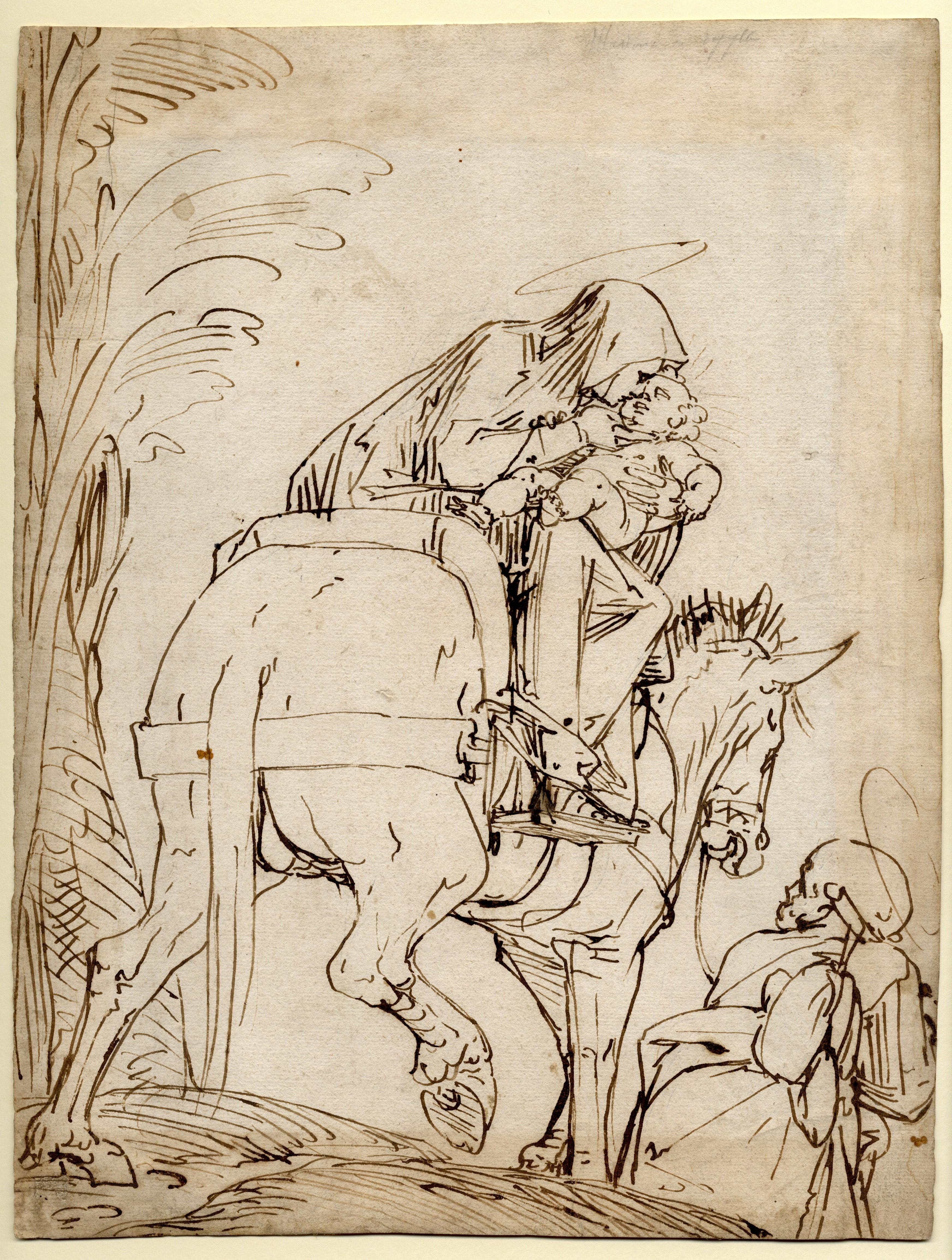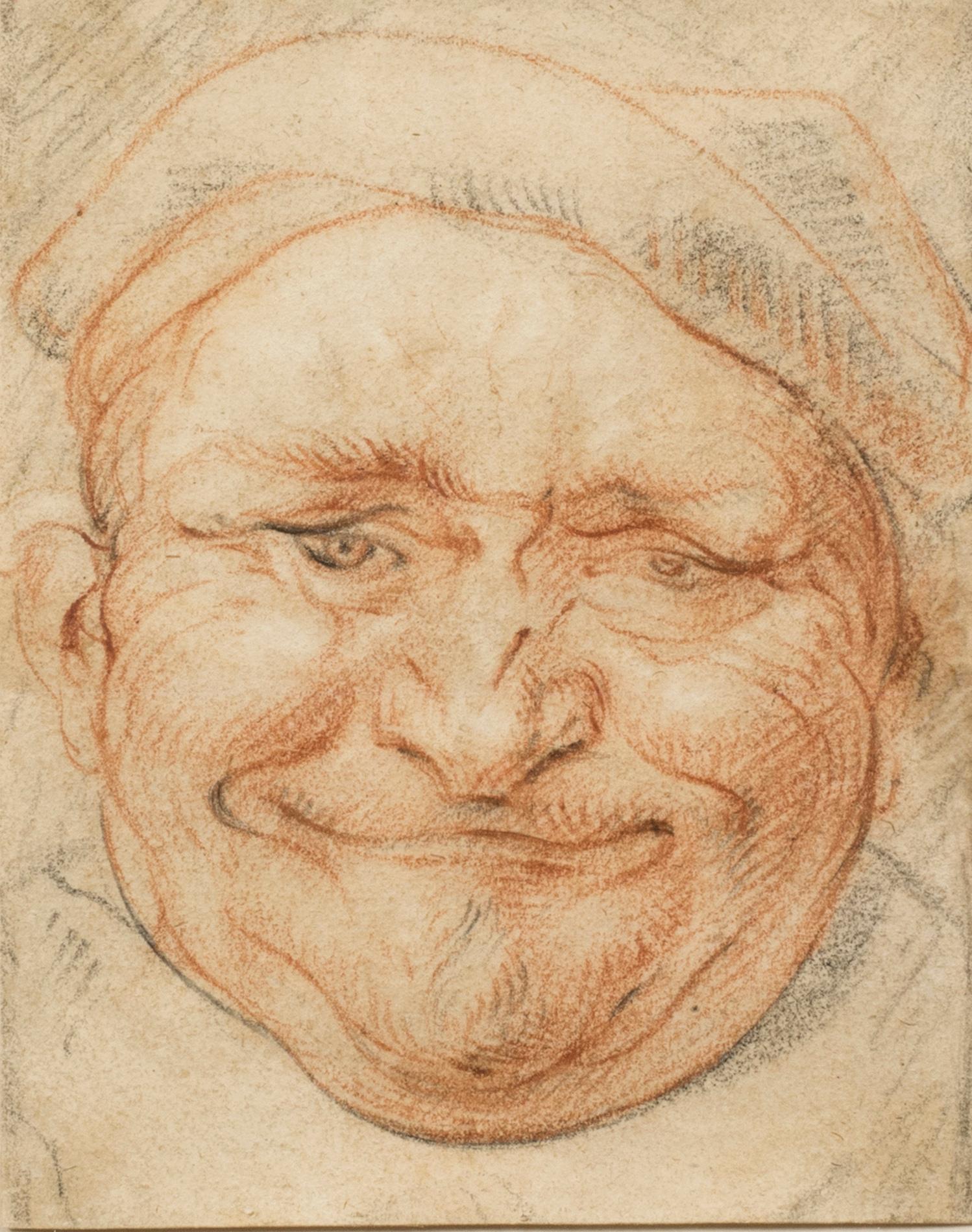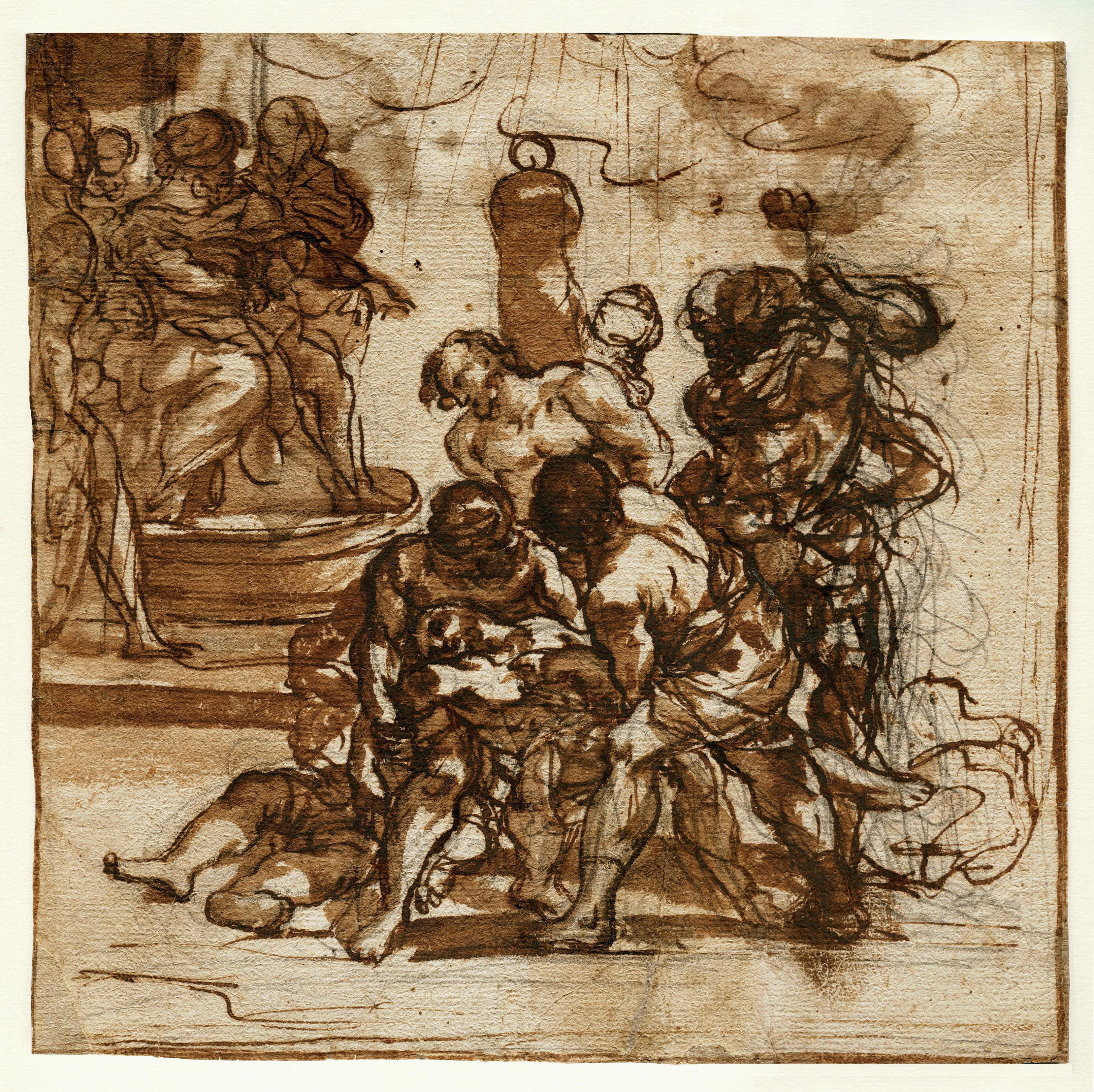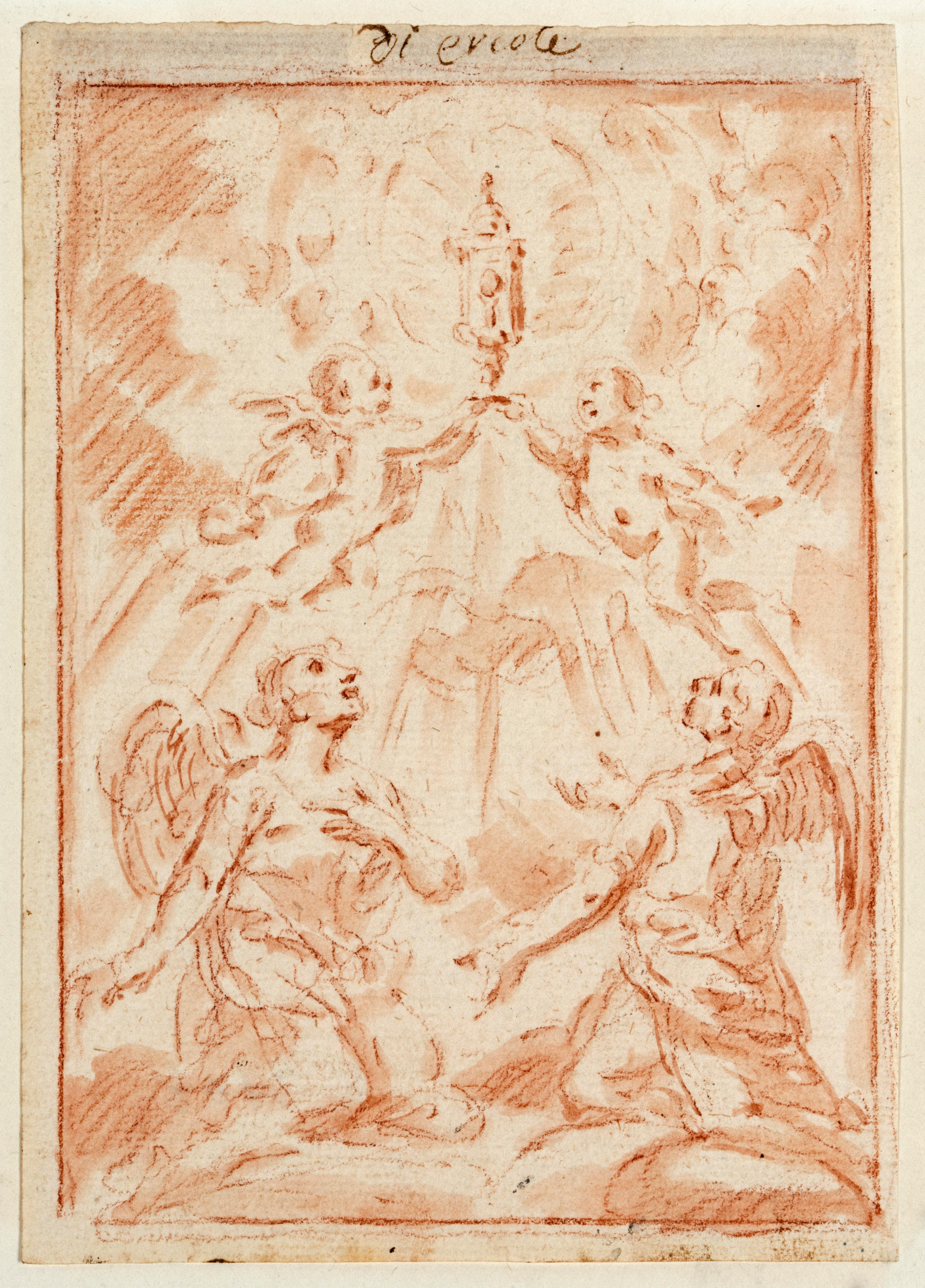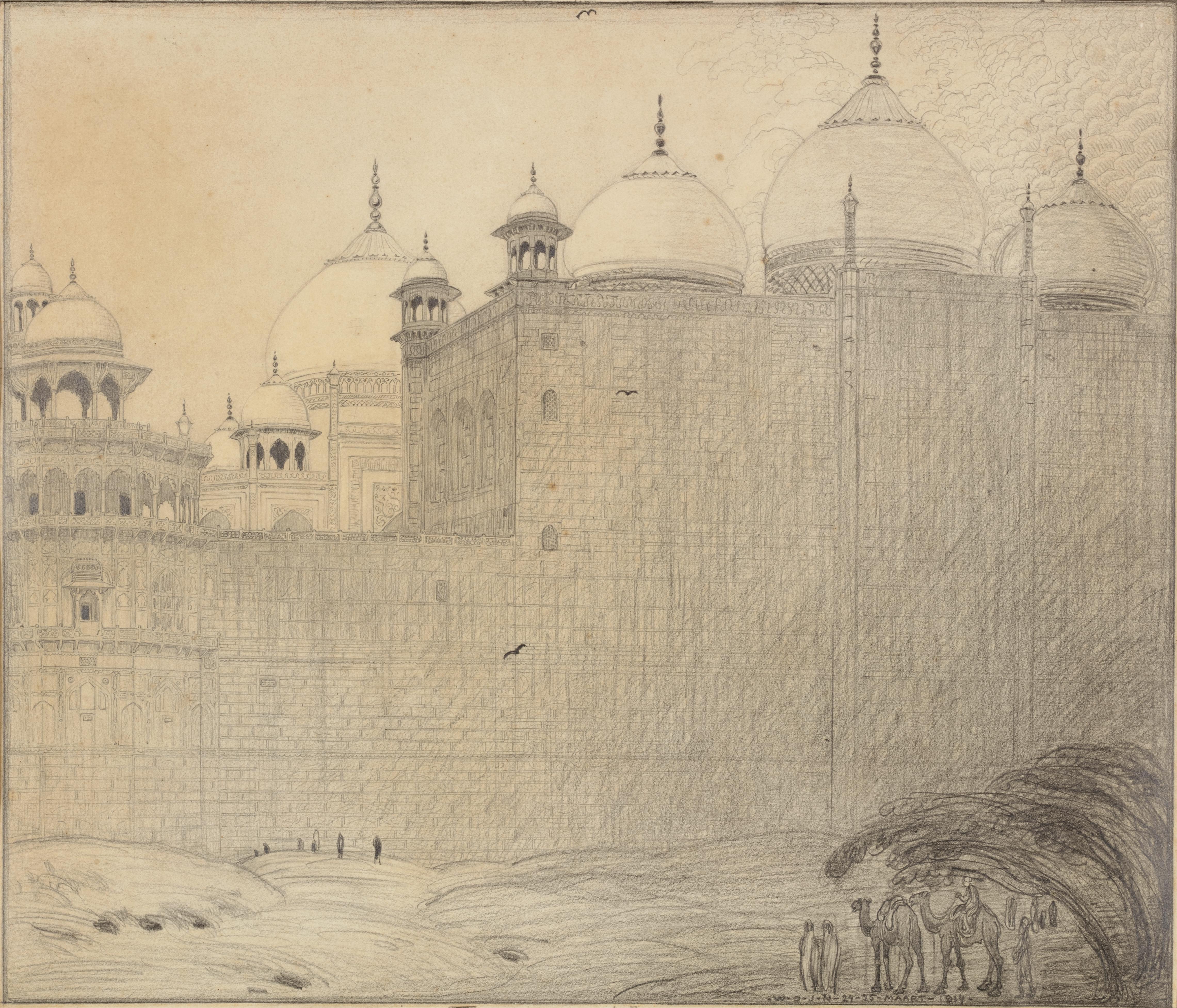Items Similar to A Study of Two Models by Sir William Russell Flint
Want more images or videos?
Request additional images or videos from the seller
1 of 9
William Russell FlintA Study of Two Models by Sir William Russell Flint20th century
20th century
About the Item
Sir William Russell Flint, R.A., P.R.W.S.1880-1969 Scottish
A Study of Two Models
Signed "WRussell Flint" (bottom right)
Ethereal and sensual, Sir William Russell Flint's Study of Two Models highlights the artist's skillful mastery in capturing the female form. One of the most celebrated watercolorists of the 20th century, Flint enjoyed considerable success during his lifetime, and today his lasting reputation is tied to his remarkable talent for portraying women, like the two models featured here. This study gives an alluring view of the artist's process in rendering his famous nude watercolors.
Though six figures are visible in this study, Flint was working with only two models, each of which has been rendered in a different color: red or black chalk. The artist captured both women in a variety of poses and angles, paying meticulous attention to their facial expressions and the drapery of their clothing. A semi-nude woman lays across the foreground with her hair flowing above her head, and Flint has masterfully captured her wistful expression with a few deft strokes of chalk.
Born in Edinburgh, Flint began his artistic training at the age of 14 when he embarked upon a six-year apprenticeship as a lithographic draughtsman. In 1903 he joined The Illustrated London News, earning him a reputation as a gifted illustrator. After serving in World War I, Flint devoted his time to painting, and soon became an Associate Member of the Royal Academy in 1924. In a career spanning 70 years, it would be his treatment of the female figure that was considered most masterful. He was honored in 1962 by the Royal Academy with a retrospective exhibition of his works - the highest such recognition an artist can achieve during his lifetime.
20th century
Unframed: 17" high x 34½" wideFramed: 24" high x 39¾" wide
Provenance:
The Fine Art Society, London, by May 1958
Sale: Sotheby's, London, 10 November 1981, lot 123
Richard Green, London
Private Collection, Germany
M.S. Rau, New Orleans
- Creator:William Russell Flint (1880 - 1969, Scottish)
- Creation Year:20th century
- Dimensions:Height: 23.75 in (60.33 cm)Width: 39.75 in (100.97 cm)Depth: 2.75 in (6.99 cm)
- Medium:
- Period:
- Condition:
- Gallery Location:New Orleans, LA
- Reference Number:
About the Seller
5.0
Vetted Seller
These experienced sellers undergo a comprehensive evaluation by our team of in-house experts.
Established in 1912
1stDibs seller since 2013
13 sales on 1stDibs
Typical response time: 4 hours
- ShippingRetrieving quote...Ships From: New Orleans, LA
- Return PolicyThis item cannot be returned.
More From This SellerView All
- Homme à l'agneau, mangeur de pastèque et flûtisteBy Pablo PicassoLocated in New Orleans, LASigned, dated and numbered “Picasso / 3.2.67 / II” (upper right) Crayon on paper Hailed among the fathers of modern art, Pablo Picasso possessed a seemingly e...Category
20th Century Modern Nude Drawings and Watercolors
MaterialsPaper, Crayon
- Portrait Of A Young Woman Attributed To Frank Weston BensonBy Frank Weston BensonLocated in New Orleans, LAAttributed to Frank Weston Benson American 1862-1951 Portrait of a Young Woman Watercolor on paper Signed “F.W. Benson 1912” (lower right) This watercolor painting, entitled Port...Category
20th Century Impressionist Figurative Drawings and Watercolors
MaterialsPaper, Watercolor
- Musiciens Sur Fond Multicolore By Marc ChagallBy Marc ChagallLocated in New Orleans, LAMarc Chagall 1887-1985 Russian Musiciens sur fond multicolore (Musicians on a multicolored background) Signed 'Chag' (on the sleeve of the right figure); stamped with the signature 'Marc Chagall' (lower right) Tempera, gouache, colored ink and India ink and pastel on paper “The fact that I made use of cows, milkmaids, roosters and provincial Russian architecture as my source forms is because they are part of the environment from which I spring and which undoubtedly left the deepest impression on my visual memory of the experiences I have." - Marc Chagall Marc Chagall’s 1981...Category
20th Century Post-Impressionist Figurative Drawings and Watercolors
MaterialsPaper, Pastel, Ink, India Ink, Tempera, Gouache
- La femme préhistorique (Prehistoric Woman)By James Jacques Joseph TissotLocated in New Orleans, LAJames Tissot was among the most successful and critically acclaimed artists of the Victorian era. Although the artist is celebrated for his elegant scenes of fashionable life in Paris and London, this work is a fascinating rarity within his oeuvre. In this monumental pastel, Tissot depicts a prehistoric woman draped in a tiger skin, presented with a striking pose and heroic air. His delicate portraiture, combined with his fascination with conveying texture, demonstrates why he was one of the most revered artists of his generation, and La femme préhistorique illustrates the remarkable technique for which he was renowned. This work was completed in preparation for a series of works exploring the Old Testament undertaken by Tissot from 1899-1902 that remained unfinished at the time of his death. A portion of this series focused on illustrations of Adam and Eve, and among these sketches were images of a nude Eve partially draped in animal furs. Towards the end of his life, following his conversion to Catholicism, biblical subjects became important to the artist. A few years before this work was completed, Tissot embarked upon a highly ambitious group of nearly 300 watercolors illustrating the New Testament, presenting the illustrated epic in its entirety at the Paris Salon of 1894. Both of these series were a critical artistic departure for the artist, stemming from a desire to create works separated from his typical images of modern society. This pastel imagines Eve as the prototype of womanhood in the guise of a prehistoric woman. Tissot rarely painted the nude, and his skill as a draftsman highlights the figure's natural beauty, contrasting it with the stark landscape surrounding her. Although a study, this monumental work is incredibly well-finished and highly engaging, with the statuesque model commanding the majority of the canvas. Her pose is strong and theatrical, and she addresses the viewer with a direct, confident gaze. The imagined historical subject of this drawing is grounded by Tissot’s exceptional attention to detail. A master of conjuring an array of textures, Tissot showcased this ability in this work by juxtaposing many types of fabrics and natural elements within one composition. The tiger skin with which the woman partially covers herself was a favorite studio prop of Tissot’s, appearing in many of his most influential works from the period, including several paintings of his partner and favorite model Kathleen Newton. It, in particular, showcases the artist’s understanding of texture, yet it also serves as an exotic element that elevates the sensuality of the scene when placed against the woman’s bare skin. Born in 1836 in the port town of Nantes, Tissot traveled to Paris at the age of 20 in order to join the studios of Hippolyte Flandrin and Louis Lamothe. During this period, he became close with James Abbott McNeill Whistler, Edgar Degas and Edouard Manet, and the impact of these friendships is reflected in his portraits of modern life. Having enjoyed considerable success in Paris during the 1860s, Tissot fought in the Siege of Paris, and after the fall of the Commune in 1871, he went to London, where he stayed for the next ten years. He was met with incredible success there, and he also met the love of his life, Kathleen Newton, a divorcée, with whom he lived from about 1876 until her death in 1882. Today he is regarded among the great masters of Belle Époque painting, and his works can be found in important collections worldwide, including the Metropolitan Museum of Art, the Brooklyn Museum, the National Gallery of Art, the Musée d’Orsay, the Tate Gallery and many others. This pastel remained in Tissot's private collection until his death in 1902 and is referenced in the posthumous 1902-3 valuation of Tissot's home at 64 avenue du Bois...Category
Early 20th Century Academic Nude Drawings and Watercolors
MaterialsLaid Paper, Canvas, Oil Pastel, Pastel
- Costume Oriental by ErtéBy Erte - Romain de TirtoffLocated in New Orleans, LAErté (Romain de Tirtoff) 1892-1990 | Russian-French Costume Oriental Signed “Erté”(lower right) Inscribed "No. 19" (en verso) Gouache on paper Titled Costume Oriental, this ensemble epitomizes Erté's signature fusion of Eastern and Western aesthetic elements. The attire features grey pantaloons enveloped by a vivid red skirt adorned with intricate white Orientalist motifs. The bodice, a geometric tapestry of black and white stripes, is composed of narrow horizontal black bands juxtaposed with glittering gemstones. This visual harmony is accentuated by a trio of diamond shapes vertically aligned on the chest. The crowning element is a gem-encrusted turban, surmounted by three red fan shapes, lending the headpiece the appearance of a striking medallion. This sartorial masterpiece is an authentic Erté creation for the 1926 rendition of George White's Scandals, staged at the Heilig Theatre in Portland, Oregon. The revue initially debuted at the Apollo Theatre in New York City on June 30, 1924, enjoying a run of 196 performances before embarking on a tour. Orchestrated by George White from 1919 to 1939, the Scandals series distinguished itself through its timely comedy and exceptional choreography, a testament to White's expertise as a dancer. In contrast to the more lavish Ziegfeld Follies,Scandals offered a streamlined yet sophisticated experience. The Sixth Edition was particularly remarkable for its artistic collaborations: Erté designed the scenery and curtains, while George Gershwin composed the musical score, which included the classic "Somebody Loves Me." The production featured an ensemble of notable performers, including Nyra Brown and the Leeland Sisters. The artist, Russian-French visionary Romain de Tirtoff (1892-1990), popularly known as Erté, began his artistic journey in the culturally rich city of St. Petersburg, where he developed an early fondness for ballet and theatrical performances. He moved to Paris in 1912 to study architecture, and quickly found his creative niche in crafting fantastical costumes for the city’s bustling nightlife. Erté‘s expertise, refined under the guidance of the famed Paul Poiret, captured the attention of Harper’s Bazaar, marking the beginning of a significant partnership that spanned from 1915 to 1936. The artist also designed sets for notable cinematic masterpieces including Ben Hur and La Bohème, and created sets and costumes for cabarets, operas and other performances at the Folies-Bergères, Bal Tabarin, the Théâtre du Bataclan and Le Casino de Paris. Often remembered as the “Father of Art Deco,” Erté was a trailblazer whose colorful creations shaped the groundbreaking Art Deco era more than any other, leaving an indelible mark on the history of art and design. His artworks reside in prestigious museum collections worldwide, including the Metropolitan Museum of Art in New York, the Victoria & Albert Museum in London and the Los Angeles County Museum of Art. Painted 1926 Paper: 12“ high x 9 wide Frame: 19 1/4“ high x 16 1/8” wide x 5/8" deep Exhibitions: M.S. Rau, New Orleans, Erté and the Era of Art Deco, October 14, 2023 - January 3, 2024 Provenance: Private collection, Paris Christie's South Kensington: Sale, 2014 Bouret Gonzalez Collection Sydney and Sibyl Colefax...Category
20th Century Art Deco Figurative Drawings and Watercolors
MaterialsPaper, Gouache
- Piccadilly Circus by Fortunino MataniaBy Fortunino MataniaLocated in New Orleans, LAFortunino Matania 1881-1963 Italian Piccadilly Circus Signed “Matania” (center, on bus) Watercolor and gouache on paper This exceptional watercolor and gouache composition by fam...Category
Early 20th Century Figurative Drawings and Watercolors
MaterialsPaper, Watercolor, Gouache
You May Also Like
- The Flight into EgyptLocated in New York, NYInscribed: 3. una Madonna che va in Egitto, verso, and Madonna che va in Egitto, recto Provenance: Private Collection, UK, since 1999 This expressive and boldly executed drawing is the work of Luca...Category
16th Century Old Masters Figurative Drawings and Watercolors
MaterialsChalk, Ink, Pen, Paper
- Head of a Cheerful Man Wearing a CapLocated in New York, NYWatermark: the arms of Amsterdam Provenance: Christie’s, Amsterdam, 1 December 1986, lot 46; where acquired by: Private Collection, New York Literature: Roger Adolf d’Hulst, “Jordaens Drawings: Supplement II,” Master Drawings, vol. 28, no. 2 (1990), pp. 153-156, no. A237a, fig. 17. Matías Díaz Padrón, Jacob Jordaens...Category
17th Century Baroque Portrait Drawings and Watercolors
MaterialsPaper, Chalk
- The Martyrdom of the Santi Quattro CoronatiLocated in New York, NYProvenance: Private Collection, UK After initial training under Justus Suttermans and Vincenzo Dandini, in 1673 Anton Domenico Gabbiani embar...Category
17th Century Old Masters Figurative Drawings and Watercolors
MaterialsPaper, Chalk, Ink, Pen
- Angels in AdorationLocated in New York, NYProvenance: Private Collection, USA. This drawing is by Ercole Procaccini the Younger, who represents the final generation of painters in the storied Procaccini family. The son of C...Category
Early 17th Century Baroque Drawings and Watercolor Paintings
MaterialsPaper, Chalk
- Part of the ring-wall of the Taj Mahal, Agra, India, 1914Located in Amsterdam, NLPart of the ring-wall of the Taj Mahal, Agra, India, 1914 Signed with initials and dated bottom right Black chalk on paper, 45.5 x 53 cm Literature: Ernst Braches en J.F. Heijbro...Category
1910s Art Nouveau Landscape Drawings and Watercolors
MaterialsChalk, Paper
- Entrance to the temple at Klungkung, Bali, 1925Located in Amsterdam, NLEntrance to the temple at Klungkung, Bali, 1925 With studio seal at the reverse, dated and described, bottom left Black chalk on paper, 53 x 46.5 cm In ebonized frame with white mount Willem Otto Wijnand Nieuwenkamp (1874-1950) Nieuwenkamp was born on July 27th 1874 in Amsterdam. His father owned sailing ships sailing to Indonesia and hearing the stories of the returning captains evoked in the young Nieuwenkamp an obsession for distant lands and adventure. After a failed attempt by his father to have his son make a career in his business, Nieuwenkamp attended the Academy for Decorative Art in Amsterdam. However, he left within one year to go his own way. He was an autodidact and a great experimenter with new techniques, particularly in the art of etching. Nieuwenkamp was a very focused man with the discipline of a scientist tempered by the sensitivity of an artist, a lust for adventure, a natural appreciation for ethnic arts and an enormous ambition to tread new paths. In 1898 he visited Indonesia for the first time and on his second visit in 1903-1904 he went on to Bali and became the first foreign artist to love Bali and the Balinese with a passion. Having secured agreements with several museums in the Netherlands to obtain Balinese art...Category
1920s Art Nouveau Landscape Drawings and Watercolors
MaterialsPaper, Chalk
